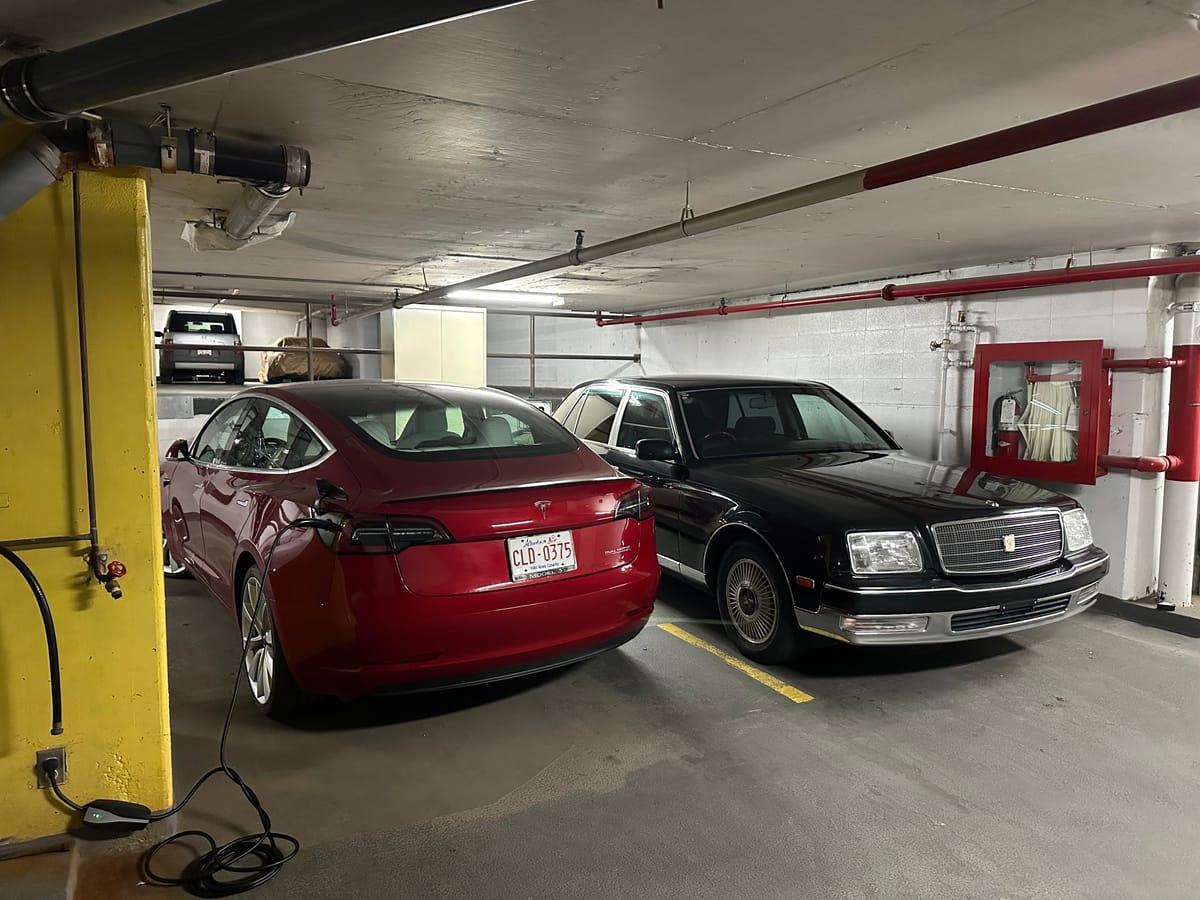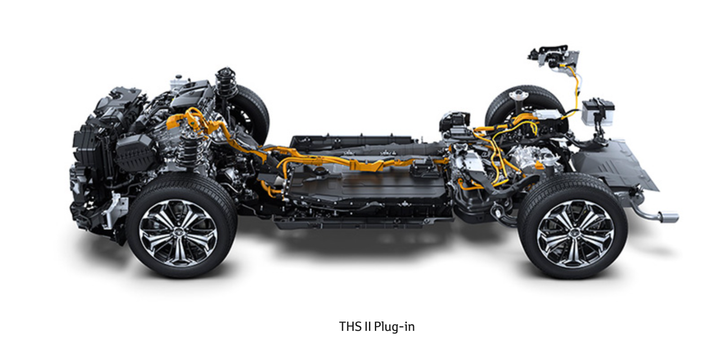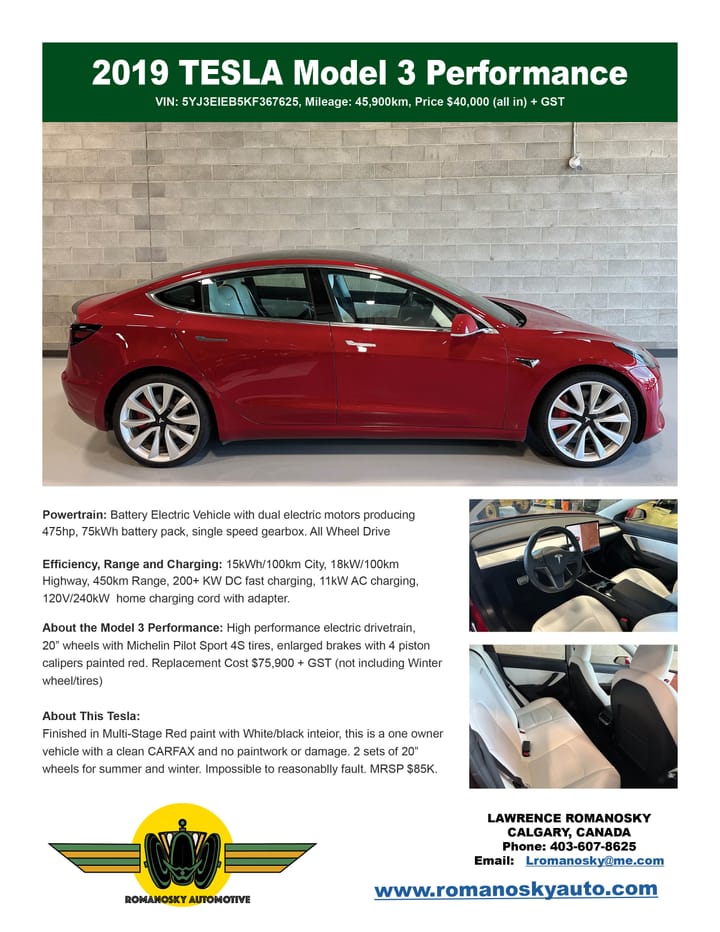Condo Living and EVs

The energy agnostic among us recognize that EVs make excellent vehicles for in-city driving if you have a place to park them and where it is practical to wire in a level 2 charger. These 240V wall boxes will charge at around 10kW and replenish a day’s driving in a few hours and can be programmed to do so at night. Charging from home can cost less than $.15/kWh - meaning that a compact EV will cost only about $600 per year for ‘fuel’ vs. about $3,300 per year for an equivalent size ICE vehicle*
Charging at DC fast chargers costs anywhere from 3 to 6 times this amount, meaning if you can’t charge your EV from home the operating cost advantage from driving an EV will be largely negated.
What if you live in a condominium, apartment or a home where it is impractical to install a Level 2 charger? What if the only electrical service you have available is a 120V plug? If that is the case, can you still run an EV without relying on expensive public charging?
If you are parking in a parkade, or an electrified outdoor stall, it is likely that you are sharing your 120V circuit with other users. How much power you can draw to charge your EV will depend on who else is using those plugs and for what. Assuming that at night you are the only user and it is a typical 120V 15AMP circuit, you have a 1.4kW draw available to you in theory (120V x 15AMP x 80% = 1.44kW). Perhaps 1.2kW continuous is realistic.
If we have a compact EV with consumption of 20kWh/100km and a daily commute of 50km and we can charge at 1kW, then we would use 10kW of electricity each day which would require the EV to be plugged in for 10 hours with a 120V plug to replenish it. You would then start every day with the same State Of Charge (SOC).
The size and type of battery is important; not only because of range, but because the useable battery capacity creates a buffer which affects how often, if ever, you need to use expensive public chargers. For days where you use more electricity than can be replenished by 12 hours of 120V charging, you can draw down the batteries SOC, rather than finding a fast charger to top up. If you drive more during the week, you could draw down your batteries SOC during the week, but replenish it on the weekend by leaving the vehicle plugged in for longer.
Battery chemistry affects the useable daily capacity as some batteries will degrade quickly if charged to 100% every day. The more energy dense ‘performance’ NMC (Nickel Manganese Cobalt) batteries are not as stable at 100% as other chemistries and the recommendation is to limit charging to 80% on a daily basis. Cheaper, less energy dense LFP (Lithium Iron Phosphate) batteries are inherently more stable, and can be charged to 100% every day without excessive degradation.
Limited to about 1kW at the plug with a 120V circuit, and 12 hours per day of nighttime charging, the consumption of the vehicle becomes more important than if you were able to charge 10x faster with a Level 2 charger. EV consumption varies the same as with ICE vehicles; a small efficient EV can use 15kWh/100km or less in the city, where as something like a Ford F150 Lightning will use double that. Winter driving can add 25% to the electrical consumption. A short 20km commute in something like a Tesla Model 3 would only use 3kW of electricity daily, but a 100km daily commute in a Lightning would use 30kW. The Tesla would be easy - just plug it in for 3 hours each day. With the Ford in this example you could plug it in for 10 hours each night, and only replenish 1/3 of the electricity you used - you would still be reliant on the public DC chargers.
I moved from a bungalow with a Level 2 charger that gave me 7.5kW which was enough to replenish the daily needs of my Hyundai Ioniq 5 in 2 or 3 hours. I moved into a townhome downtown with an underground parkade and a 120V plug. With a Tesla Model 3 replacing the Ioniq, and a lot more driving with my kids in soccer, I was driving 100km per day using around 16.5kWh of electricity. After plugging in for 12hours I had a deficit of about 4kW on week days, but I could charge longer on weekends where I often drove another car and could leave the Tesla parked and charging for a full 24 hours. I used the Tesla Supercharger once when I got it, but home charged exclusively after that, and had my share of big driving days. The lowest SOC I saw was 40%.
There is a 250kW Tesla Supercharger 5 blocks from where I live that can charge the car 20%-80% in less than a half hour, but I never wanted to use it at $.70 per kWh. I pay nothing to charge the car at the condo because the electrical usage is baked into my condo fees - at least for now. Also, slow charging is easier on the battery. That said, I have the only electric car in the parkade - if my neighbours brought home an EV we all can’t charge at once. Splitting the circuit with a neighbour, charging only on alternate days, I would need to start using the Supercharger.
My Tesla was the Model 3 Performance with the NMC battery. The car specifies to charge to 80%, unless greater range is required for a ‘one time’ use. The Model 3 Standard has the LFP batteries which you can charge daily to 100%. For my application the extra cost of the larger battery pack in the Performance (and Long Range) variant would be largely wasted as the effective daily battery storage would be similar. The Standard Model 3 would also be more efficient due to its smaller battery pack and lighter weight.
The take-away for me was that running an EV on a 120V plug is perfectly feasible if you are not sharing the 15AMP circuit, if you are driving less than 100km per day, and if you driving an efficient EV.
Many Condominium boards are struggling with the expensive electrical upgrades necessary to accommodate EVs. Many have brought in Level 2 public chargers on site, but this isn’t really a complete solution in my opinion. A 2 hour charge at 10kW is very convenient if the charger is in your garage and you are the only one using it - less so if many people want to use it at the same time. If one user needs a full charge on their EV it could tie up the charger for most of a day. Because you have to move your car after it is charged, you are unlikely to be able to take advantage of charging overnight. Also, as the photo below illustrates, not every Albertan respects EV-Only parking.

A PHEV running in electric mode will have similar consumption to a BEV of equivalent size, and their charging requirements will be similar. Proposed Canadian legislation dictates that all vehicles sold in Canada by 2035 be ZEVs, including BEVs and PHEVs with an 80km electric range. To get the benefit from a PHEV it needs to be plugged in and driven on its batteries. 80km of electric range will use about 16kWh of electricity in a compact PHEV which will take about 13 hours hours plugged into a 120V circuit providing 1.2kW.
For many, consumption, daily commuting distance, night time charging and a 120V electrical service intersect neatly with a compact EV or PHEV. 12 hours of nighttime charging would offer enough electricity for the 50km-80km of most people’s commutes. BEV drivers may have to occasionally visit a fast charging station, and PHEV drivers may have to fill up with gasoline once in a while - but for the most part the majority of drivers should be able to charge from home and drive predominantly on electricity and batteries.
What is needed for those living in multi-family dwellings is a dedicated 120V 15Amp service for every parking stall. A few Level 2 chargers in communal parking areas could satisfy those with increased charging needs, as well as visitors.
Making EV ownership practical for people living in higher density areas will require convenient charging. Solving this problem will be necessary to keep EV adoption rates growing. Wealthy early adopters with single detached homes probably have an EV already - the next stage is to get a larger share of the buying public interested in e-mobility by offering less expensive vehicles and more convenient charging solutions for those in higher density areas.
*Compact EV: 20kWh/100km, 20,000km/yr (20,000/100 x 20 x .$15) = $60 Compact ICE: 10L/100km, 20,000km/yr (20,000/100 x 10 x $1.65/L) = $3,300





Comments ()